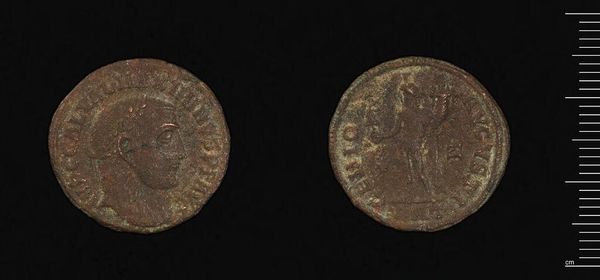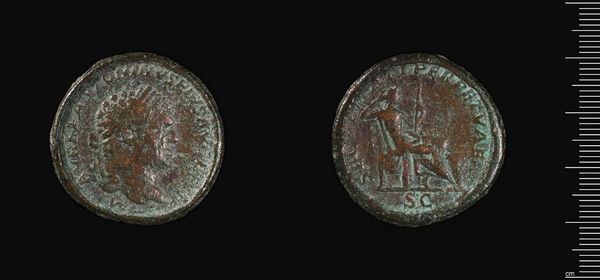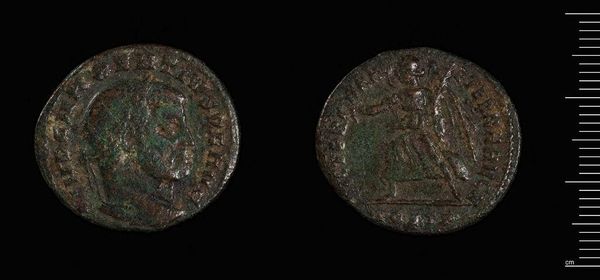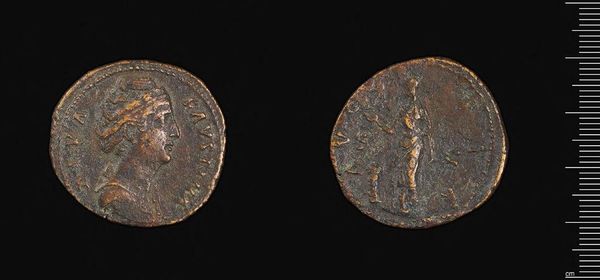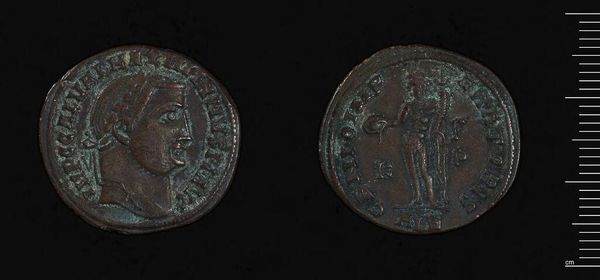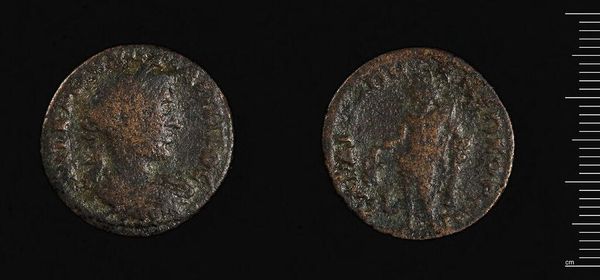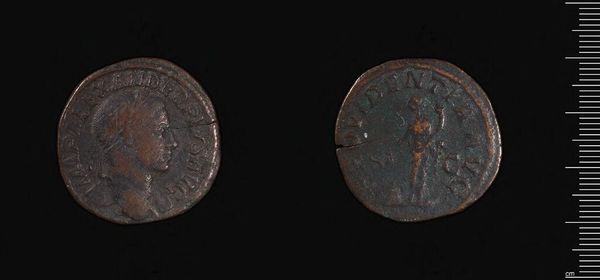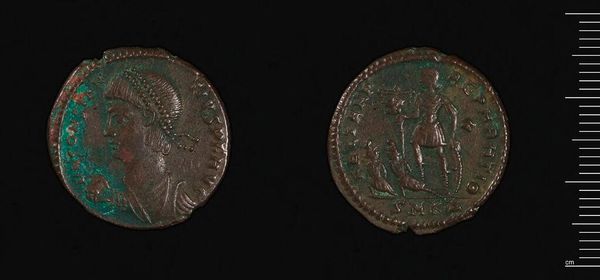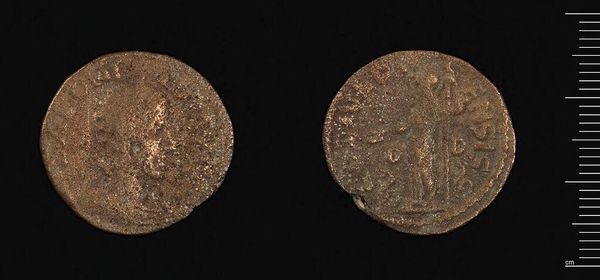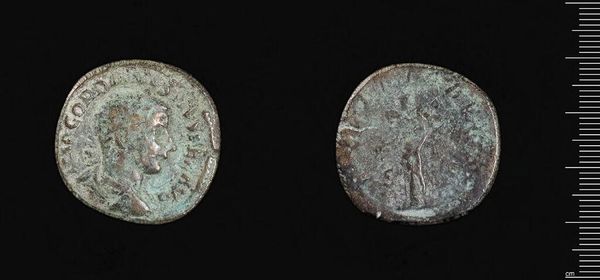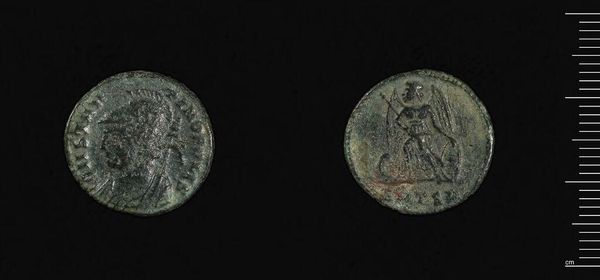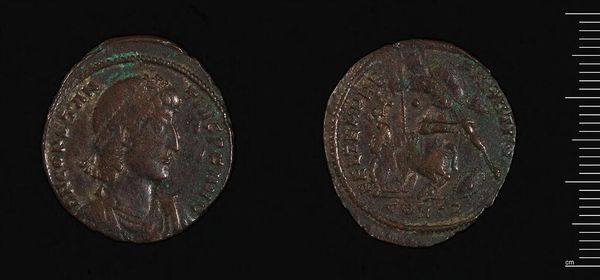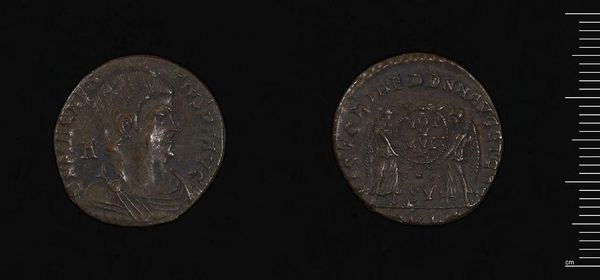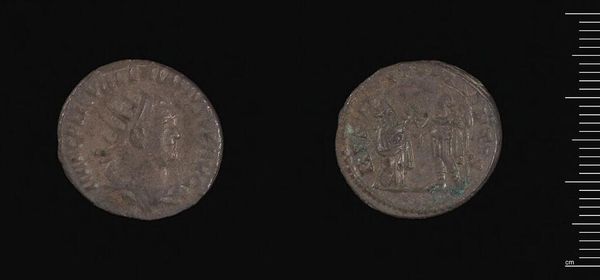
Dimensions: 3.53 g
Copyright: CC0 1.0
Curator: Here we have a coin of Magnentius, weighing 3.53 grams, currently residing in the Harvard Art Museums. It's quite striking, isn't it? Editor: Yes, I'm immediately drawn to the almost ghostly quality of the figures. It evokes a sense of faded grandeur and the relentless march of time. Curator: Precisely. The imagery here is deliberate. On one side, we see a portrait of Magnentius himself, projecting authority, while the reverse likely features symbolic figures referencing power or perhaps religious significance. Editor: And consider the material—bronze, perhaps? A common material, yet imbued with the weight of imperial ambition. The coin wasn't just money; it was propaganda, circulating the image and claims of a ruler. Curator: Coins like this were potent symbols. They speak volumes about how rulers sought to legitimize themselves. They controlled not only commerce, but the very visual language of power. Editor: Indeed. Studying the wear and tear also tells a story—how it was handled, circulated, and ultimately, preserved. It connects us to the economic and social realities of its time. A piece of metal transformed into a vessel of social and political meaning through use. Curator: Seeing the coin as a cultural artifact and a physical object, each perspective enriches our understanding. Editor: Absolutely. It's a reminder that even the smallest object can hold centuries of history and meaning within its form and material.
Comments
No comments
Be the first to comment and join the conversation on the ultimate creative platform.
